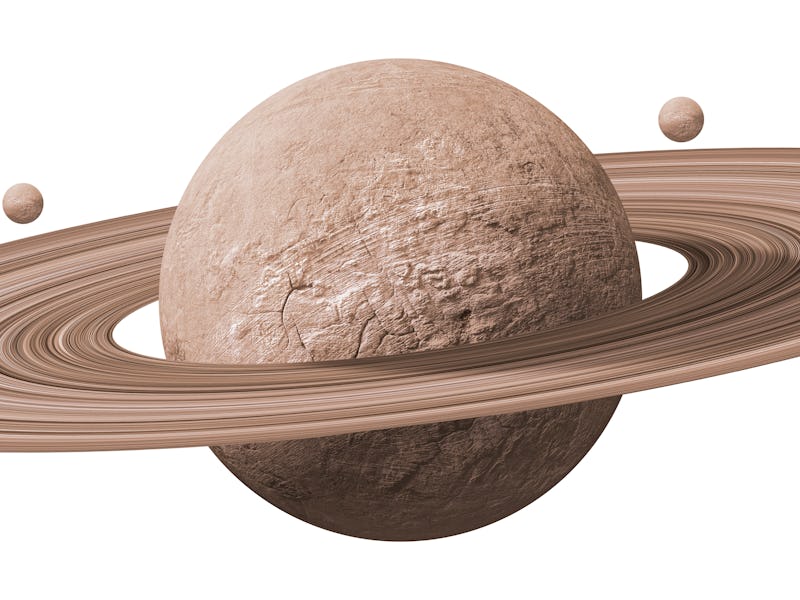Look for one planet in the sky every night until August 2
Plus: Elon Musk says he will break with a 200-year-old tradition

I write to you as my bicycle rests against a wall on the other side of the sliding glass door in my back garden. The sun’s illuminating its frame. All of which is to say I’m going to make the intro to this newsletter short and go for a ride. It’s July. But also, my urge to pedal is partially inspired by this incredible story we published over the weekend: live longer, ride a bike.
I’m Nick Lucchesi, editor-in-chief at Inverse, and this is Inverse Daily, the daily newsletter that brings you essential, interesting science and innovation stories that stick to your brain like Velcro. Scroll to the bottom of this email for the Science Song of the Day. It’s a classic.
This is an adapted version of the Inverse Daily newsletter for Wednesday, July 28, 2021. Subscribe for free and earn rewards for reading every day in your inbox.
Saturn at opposition — The planet Saturn will reach a moment of alignment with Earth and the Sun known as “opposition” in August 2021 and appear especially bright in the sky, writes Elana Spivack:
When the planets align, according to some lore, the Universe opens up its mighty powers to humans to harness for themselves, if only we knew how.
One of these special, celestial moments will occur soon — an alignment between Earth, Saturn, and the Sun known as the moment Saturn is in “opposition”. And while it won’t open a portal to the Titan realm, it will give us the best view possible of the Solar System’s most beautiful planet.
Go deeper:
- Exo-Titans: Why the moons of rogue planets could surprise us with alien life
- Look: Scientists imaged an intensely powerful force coming from a black hole
- Does Venus have alien biosignatures? Why the biggest debate in astronomy burns so hot
Avi Loeb, Harvard University's astronomy department chair, poses for a portrait in Cambridge, Massachusetts, on March 27, 2019. Loeb ignited an academic firestorm by publishing an article suggesting that ‘Oumuamua, a mysterious object that hurtled close to Earth in 2017, had perhaps been an artificial object sent from an extraterrestrial civilization.
Why is the Galileo Project looking for aliens — In the wake of this summer’s Pentagon UFO report, Harvard professor Avi Loeb has launched a new project to search for extraterrestrial life, reports Passant Rabie:
On this side of the galaxy, things are getting pretty weird.
From interstellar visitors that cruised through the Solar System to government reports detailing unidentified aerial phenomena, there are a number of unexplained cosmic incidents.
Now, a Harvard astrophysicist is putting his weight behind finding them.
Related stories:
- ‘Oumuamua: There’s bad news for alien truthers
- Dirt may ruin our best view of aliens
- To find aliens, scientists are hunting for interstellar encrypted messages
A Tesla Model Y.
Elon Musk will break with a 200-year-old tradition — Mike Brown reports Tesla is moving away from using a tried-and-tested battery chemistry in its vehicles, and it shows how the landscape is changing.
Tesla aims to move away from using the tried-and-tested lead-acid 12-volt battery in its vehicles, CEO Elon Musk revealed Monday.
The CEO, responding to a question on Twitter about whether Tesla could install lithium-ion 12-volt batteries in its entry-level Model 3 and Model Y electric vehicles, replied: “We will try.”
“Preferable for Tesla, too, as they last so long,” Musk responded. “Unlike other makers of cars, our goal is *not* to profit from service. Best service is not needing service in the first place.”
More new Tesla headlines:
- India wants Tesla, but does Elon Musk want Tesla in India? Not yet.
- Tesla's Full Self-Driving is now a monthly subscription
- Tesla solar panels: Musk announces huge expansion despite $2B lawsuit
Ancient ice filled with viruses — Sarah Wells reports on viruses uncovered in glacier core samples that may help scientists better understand historical ecosystems — as well as the impending effects of climate change.
Trees, rocks, and ice are united by a quintessential job: each catalog climate history.
Lonnie Thompson, a paleoclimatologist who’s studied ice core records since the late 1970s, puts it this way: Frozen in ice, like snapshots stacked within the pages of a photo album, are bits of the environment. This means that glacial water — considered the cleanest water on Earth — is filled with millions of microscopic and novel microbes. Much like rings within redwoods or layers of limestone, ice can be a time capsule.
“Most of the biodiversity on our planet exists as microbes, most of which we know very little about,” Thompson tells Inverse. Whether they’re swimming in the ocean, living inside our guts, or held frozen in a glacial sleep, microbes are everywhere.
More revealing climate science:
- Why shark teeth are a time machine
- 7 satellite images reveal an urgent new phase of the climate crisis
- A vital aspect of human evolution may be due to climate change
Mike Diamond, Adam Yauch, and Adam Horovitz of the Beastie Boys.
- About the newsletter: Do you think it can be improved? Have a story idea? Want to share a story about the time you met an astronaut? Send those thoughts and more to newsletter@inverse.com.
- Science Song of the Day: “The Sounds of Science” by the Beastie Boys (pictured above). (“I've got science for any occasion / Postulating theorems, formulating equations.”)
- Follow me on Twitter at @nicklucchesi, if for no other reason than to get Inverse headlines in your timeline and a few other Inverse-y things.
- Before we go: Soulja Boy (31), John David Washington (37), Dana White (52), Lori Loughlin (57), and Afroman (47) were all born on this day. (Source: AP.)